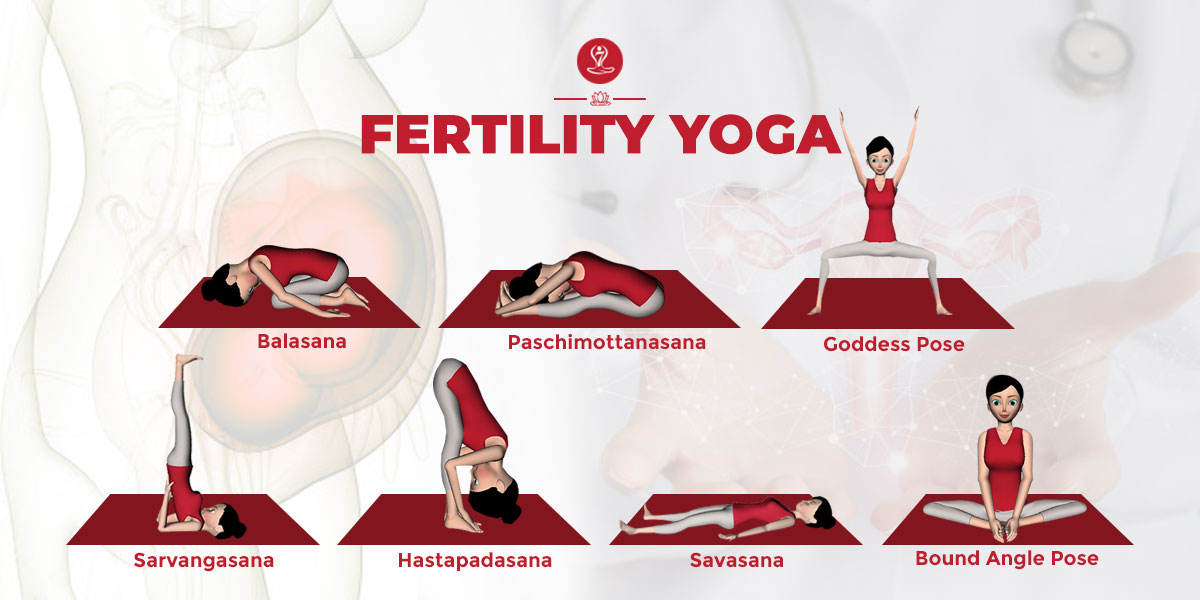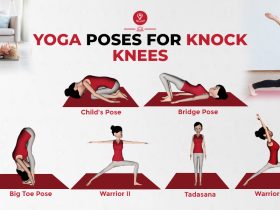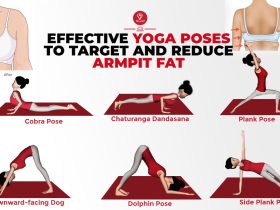
Fertility yoga poses (asana) can be a great way to increase your fertility if you want to boost fertility and want to conceive.
Yoga is believed to help keep the body strong and smooth overall. It combines both aspects of health, physical and mental levels and some yoga postures can promote both at once.
Fertility Yoga focuses on health benefits such as reducing stress, improving circulation, and increasing flexibility, which is important not for a comfortable pregnancy, and for promoting fertility.
Can Yoga Improve Fertility?
There are several research studies that indicate that yoga provides benefits to women who want to prepare their bodies for future pregnancies.
In recent times, fertility yoga has seen an increase in popularity. There is a range of yoga that includes breathing, visualization, positive affirmations, and asanas.
Yoga is a relaxing activity that makes the body strong by relieving mental stress and physical stress. A healthy body and a calm mind are essential to boost your fertility.
Benefits Of Yoga For Fertility Poses: Yoga asanas have many benefits for fertility in women.
- Reduces stress, depression, and anxiety
- Increases flexibility
- Strengthens the body
- Boosts blood flow to the uterus
- Improves circulation
- Hormonal balance
- Reduces inflammation
- Increases libido
- Stretches the internal muscles
- Balances metabolism
- Gives Inner Strength
- Stimulates the endocrine
- Purifies the energy channels
- Mood swings and Makes happier
Practicing yoga asanas generates immense positive energy in the body. In addition, the medications used to induce pregnancy have a better effect on a healthy body. Practice these yoga asanas regularly for fertility.
7 Fertility yoga poses for conceiving and fight against infertility
Fertility yoga with a few selected poses, which removes tension from the body and increases blood circulation. It detoxifies to strengthen your internal health and increases your chances of getting pregnant.
Try these yoga poses to Get Pregnant Fast and Boost Fertility more.
1. Hastapadasana / Standing Forward Bend
Hastapadasana is beneficial in increasing fertility. By doing this, the flow of oxygen in your cells increases, at the same time it also keeps the brain clean. It also stretches the muscles in the lower back and maintains hormonal balance in the endocrine system.
How to do:
- Stand upright by laying the mat in a flat place.
- Now mix the ankles and toes of both the legs together.
- Now take a breath in.
- After this, while exhaling, slowly tilt the upper part of the waist towards the front.
- Keep the knees absolutely straight and bend the rest of the body until you catch the heels with your hands.
- Now bend the mouth slowly towards the knees. Keep the mouth in the empty space between both knees or keep it close to both knees.
- In this position, keep the feet and knees perfectly straight. At the beginning of the practice stay in this position for 10 seconds and then come back to normal.
“Practice Hastapadasana Yoga (Standing Forward Bend): Download today app 7pranayama from App store or Play store”
Know more about this asana click here: Hastapadasana
2. Paschimottanasana / Seated Forward Bend
Paschimottanasana means a posture that causes back strain. This asana strengthens the muscles of the large vein behind your lower back, hips, and knees. It is very useful for increasing fertility in women as it energizes vital organs like the ovaries and stomach while reducing mental stress.
How to do:
- Sit with your legs spread forward and pull your toe towards you.
- Inhale and move the hands above your head.
- While exhaling, keep your spine straight, then bend slowly and touch the edges of your foot.
- Stay in this state for 30 seconds to 1minutes.
- Breathe and spread your hands again, exhaling and return to the sitting posture.
- Practice this asana until you are comfortable doing it 3-5 times.
Know more about this asana click here: Paschimottanasana
3. Balasana / Child Pose
Balasana helps to relieve stress and increase blood flow, which is important to increase fertility, also helpful in managing menstrual cramps. With this Yogasan, the muscles of your back, knees, hips, and thighs stretch.
How to do:
- Sit on your knees on the yoga mats ie Vajrasana. In this case, rest your upper body on the thighs.
- Make a short distance between both legs.
- Now take a deep breath and tilt the upper body towards the front.
- Keep both hands forward and note that our palms keep touching the body. And try that the head touches the ground in front.
- Try to pull the tailbone towards the pelvis.
- Keep your breath normal, this condition is called Balasana.
Know more about this asana click here: Balasana
4. Baddha Konasana / Bound Angle Pose
Baddha Konasana (bound-angle pose) is the best practice for cross-legged sitting poses, also known as the Butterfly Pose. This asana increases flexibility in your private part and hip areas as it stretches the inner thighs, genitalia, and knees. It helps to release any toxins and negative energy in the areas of the hip and groin. Your pelvic supplies blood to the abdomen and back. In women, it helps the ovaries to function properly and to heal irregular menses, on the other hand stimulating the Svadisthana (spleen or sacral) chakra, which promotes focus and productivity.
How to do:
- First sit in Dandasana (Staff Pose), your legs straight out in front of you.
- Breath out, and bend your knees as you pull your heels, and bring the soles of your feet together, close to your pelvis.
- Hold your feet together with your hands and pull them as close to the pelvic area as possible.
- Holding the feet, raise the thighs up and down like butterfly wings.
- In this position, your spine should be straight as possible.
- Hold this position, and enjoy deep breaths in this pose for as long as needed.
Know more about this asana click here: Baddha Konasana
5. Sarvangasana / Shoulder Stand Pose
The posture of Sarvangasana, performed with the support of the shoulders, helps to treat thyroid-related problems and relieves stress. This asana is one of the more effective asanas of fertility-boosting yoga as it directly affects the thyroid gland, also improves blood flow to the pelvic region.
How to do:
- To do this asana, first, lie down on your back.
- Now breathe in and out slowly and on lifting both the legs upwards, where they make an angle of 90 degrees from the ground, stop them there.
- Use the palms to lift the waist and legs upward.
- Stretch your legs upward and stretch, and stabilize the body and stay in this position for a while according to your ability.
Know more about this asana click here: Sarvangasana
6. Utkata Konasana / Goddess Pose
Utkata Konasana is very useful during pregnancy as it strengthens your lower back muscles and opens the heart center. The Goddess yoga pose is just right for pregnant women because it works for the pelvic floor and helps open the hips for childbirth. It also helps with stability as a woman’s when she grows further into her pregnancy.
How to do:
- First, you need to stand in the Mountain pose (Tadasana).
- The feet should be approximately 3 feet apart and parallel.
- Now, turn your toes out and your heels in.
- After that raise the hands up and bend the elbows at shoulder height and opening all the fingers and palms facing forward.
- As you exhale, start to slowly bend your knees deeply out the side and until they also reach a 90-degree angle.
- Finally, press down evenly through the soles of both feet.
- Maintain this pose for up to 5 to 7 deep breaths.
Know more about this asana click here: Goddess Pose
7. Savasana / Cropes Pose
This pose seems easy but when you start practicing this you will get benefits that kind of you won’t get from another pose. Savasana provides calms the body and mind as well as knots your mind thought with you.
It recommends that Savasana practice the end of yoga sessions to relax the whole body. This body posture is the same as the corpse or dead body so this also called the corpse pose.
How to do:
- Lie down on the yoga mat with your legs extended out and your arms to your side, palms facing up.
- Breathe in and breathe out and focus on your breathing.
- Move outside your thought and try to release tension over selves.
- Stay in this position for 5 to 10 minutes.
Know more about this asana click here: Savasana
Read More about – What’s the difference between meditation and yoga nidra and Savasana
Precautions of Yoga For Fertility
Practicing yoga in the morning can be beneficial as the body is typically well-rested and energized after a night’s sleep, making it easier to perform the asanas with focus and mindfulness. Additionally, practicing yoga in the morning can set a positive tone for the rest of the day, promoting mental clarity and productivity.
However, if practicing in the morning is not feasible due to various reasons, it’s perfectly acceptable to practice yoga in the evening as well. It’s important to maintain a gap of 3-5 hours between your practice and your last meal to ensure proper digestion and avoid any discomfort during the practice.
Evening yoga practice can be a great way to unwind and de-stress after a busy day, helping to release tension in the body and calm the mind before bedtime.
Ultimately, the best time to practice yoga is the time that fits best into your schedule and allows you to practice consistently.
Conclusion
Yoga helps you adopt a holistic method for the treatment of infertility. However, it is advised that you include it only with accurate diagnosis and treatment done by the doctor. With the help of Fertility yoga asanas, you can solve any of your problems and lead a happy life.
RELATED ARTICLES
May 20, 2025
Kegel Exercises: Strengthen Your Pelvic Floor for Better Health
Kegel exercises strengthen the pelvic floor muscles, which support the uterus, bladder, small intestine and rectum. Strengthening these muscles improves[...]
Oct 06, 2024
Balance Your Body: Yoga Poses For Knock Knees (Genu Valgum)
Knock knees, or “genu valgum,” is a condition in which the knees touch each other while the ankles remain apart.[...]
Sep 20, 2024
Effective Yoga Poses to Target and Reduce Armpit Fat
Fat accumulation under the arms is a common problem for many women, which is often considered an important part of[...]
RECENT POSTS
Disclaimer
The content is purely informative and educational in nature and should not be construed as medical advice. Please use the content only in consultation with an appropriate certified medical or healthcare professional







